Discover Hin Nam No National Park, Laos’ 4th UNESCO World Heritage Site, inscribed in 2025. Immerse yourself in its dramatic limestone karst, Xe Bang Fai Cave, diverse wildlife, and cultural heritage. Plan your eco-adventure with TrueIndochina.Tours to explore this transboundary treasure linked with Vietnam’s Phong Nha-Ke Bang.
Introduction to Hin Nam No National Park’s UNESCO Milestone
On July 13, 2025, during the 47th Session of the World Heritage Committee in Paris, France, Hin Nam No National Park in Khammouane Province, Laos, was officially recognized as Laos’ 4th UNESCO World Heritage Site. Designated as a Transboundary World Heritage Site, it forms a seamless ecological corridor with Vietnam’s Phong Nha-Ke Bang National Park, creating the world’s largest contiguous limestone karst landscape. Spanning 94,121 hectares, Hin Nam No captivates with its ancient geological formations, rich biodiversity, and vibrant cultural heritage. From the awe-inspiring Xe Bang Fai Cave to endangered species like the Lao Rock Rat, this park is a haven for nature lovers and cultural explorers. This guide delves into why Hin Nam No’s UNESCO status makes it a top destination for 2025, its unique attractions, travel tips, and how to plan your visit with TrueIndochina.Tours.
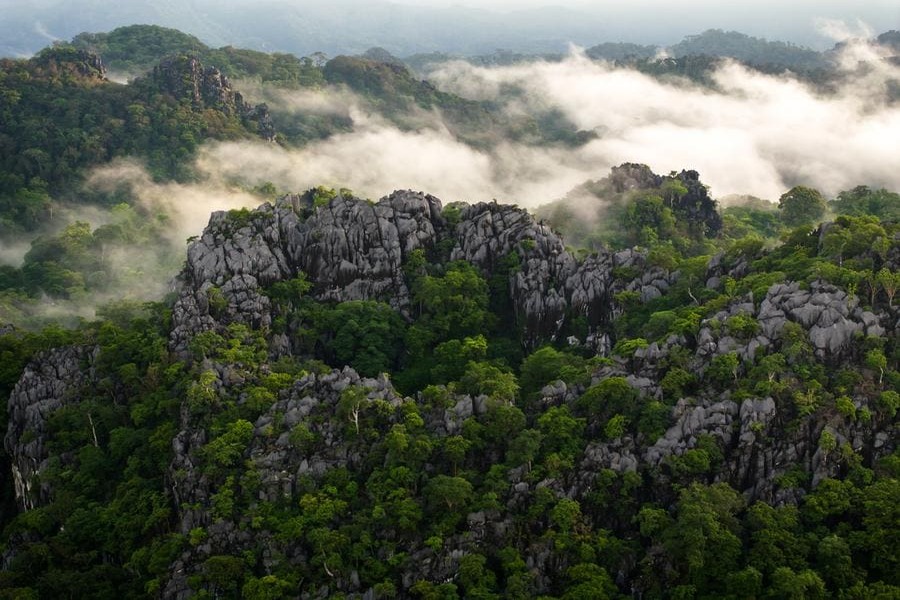
Why Hin Nam No National Park Secured UNESCO Status 2025?
Hin Nam No National Park’s UNESCO designation highlights its Outstanding Universal Value (OUV), meeting criteria for geological significance (viii), ecological processes (ix), and biodiversity conservation (x). Here’s what makes this park exceptional:
Geological Splendor of Hin Nam No
The name “Hin Nam No,” translating to “mountain crest, spiky as bamboo shoots” in Lao, reflects the park’s rugged limestone karst terrain, sculpted over 300 million years. Covering 94,121 hectares in the Central Annamite Mountains, the park features towering cliffs over 300 meters high, hidden valleys, and 173 documented caves, including the world-renowned Xe Bang Fai Cave, home to one of the largest active underground river systems. These geological wonders rival global karst landscapes, making Hin Nam No a must-see for adventurers.
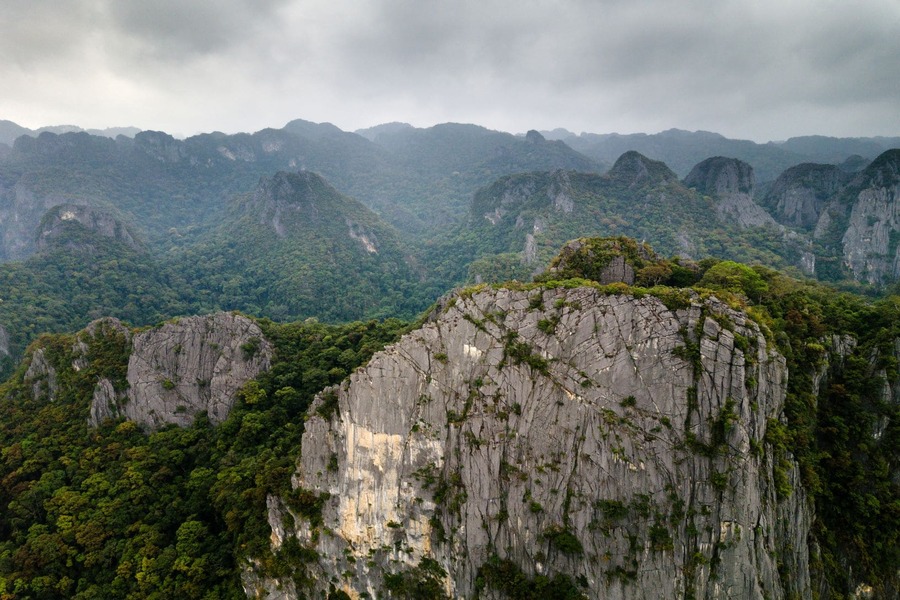
Exceptional Biodiversity in an Indo-Burma Hotspot
Nestled within the Indo-Burma biodiversity hotspot, Hin Nam No National Park hosts over 1,500 plant species and 536 vertebrate species, many of which are endemic or globally threatened. Key species include:
- Red-Shanked Douc Langur: A colorful primate unique to the region.
- Sunda Pangolin: A critically endangered mammal with distinctive scales.
- Lao Rock Rat: A rare rodent, discovered in 2005, found only in Khammouane.
- Giant Huntsman Spider: The world’s largest spider, thriving in the park’s caves.
- Southern White-Cheeked Gibbon: One of the largest populations globally.
The park’s diverse ecosystems—pristine forests, karst-specific flora, and subterranean habitats—support this remarkable biodiversity, cementing its role as a conservation priority.
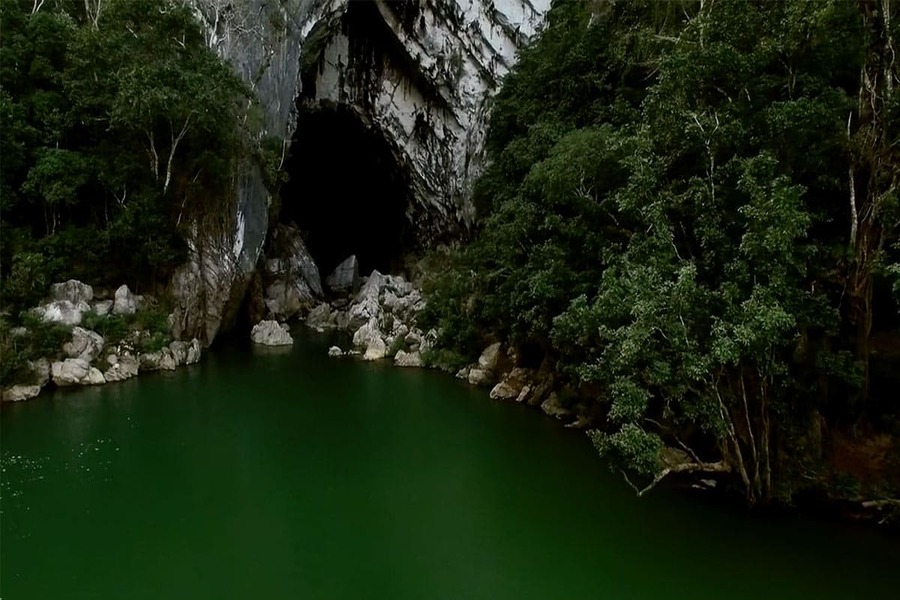
Cultural and Historical Richness
Hin Nam No is not just a natural wonder but a cultural gem. Home to ethnic minority groups like the Brou and Katang, the park preserves traditional lifestyles, including sustainable farming and spiritual practices tied to the karst landscape. These communities add a vibrant cultural dimension, making Hin Nam No a mixed heritage site that celebrates both nature and human heritage.
Transboundary Partnership with Phong Nha-Ke Bang
Hin Nam No’s UNESCO status as part of the Phong Nha-Ke Bang and Hin Nam No National Parks transboundary site creates a 217,447-hectare conservation zone (94,121 hectares in Hin Nam No, 123,326 in Phong Nha-Ke Bang). This collaboration, supported by a 2018 Laos-Vietnam MoU, strengthens efforts in biodiversity protection, sustainable tourism, and cross-border community development. It’s the first transboundary natural World Heritage Site in Southeast Asia, offering travelers a unique dual-country experience.
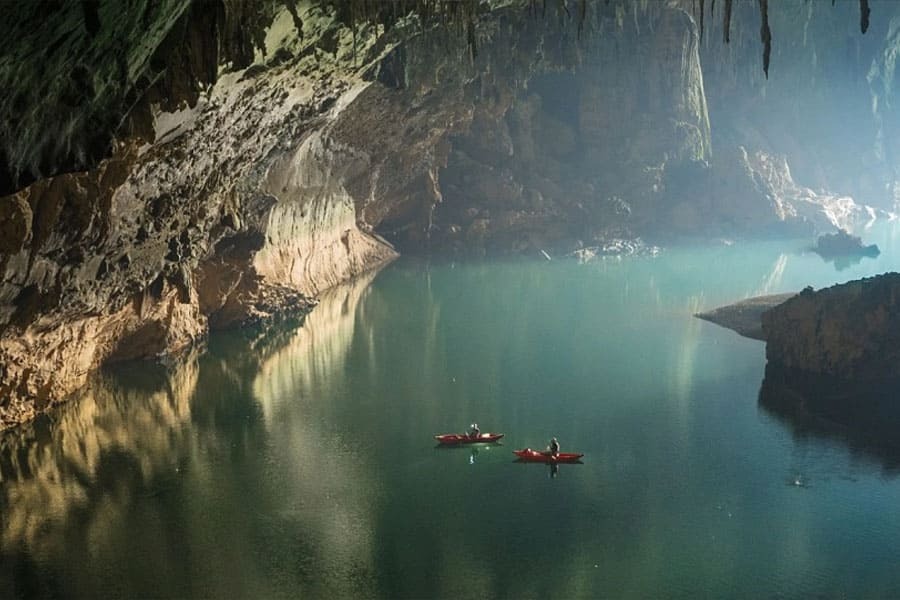
Top Attractions in Hin Nam No National Park
Hin Nam No National Park offers a range of experiences, from thrilling cave explorations to cultural immersions. Here are the highlights:
Xe Bang Fai Cave: A Geological Masterpiece
The Xe Bang Fai Cave is the park’s centerpiece, one of the world’s largest active river caves, stretching over 7 kilometers with passages up to 120 meters tall. Guided boat tours reveal stunning stalactites, stalagmites, and underground waterfalls, providing an unforgettable adventure for eco-tourists.
Travel Tip: Book guided cave tours through TrueIndochina.Tours for safe exploration. Wear non-slip shoes and bring a waterproof camera.
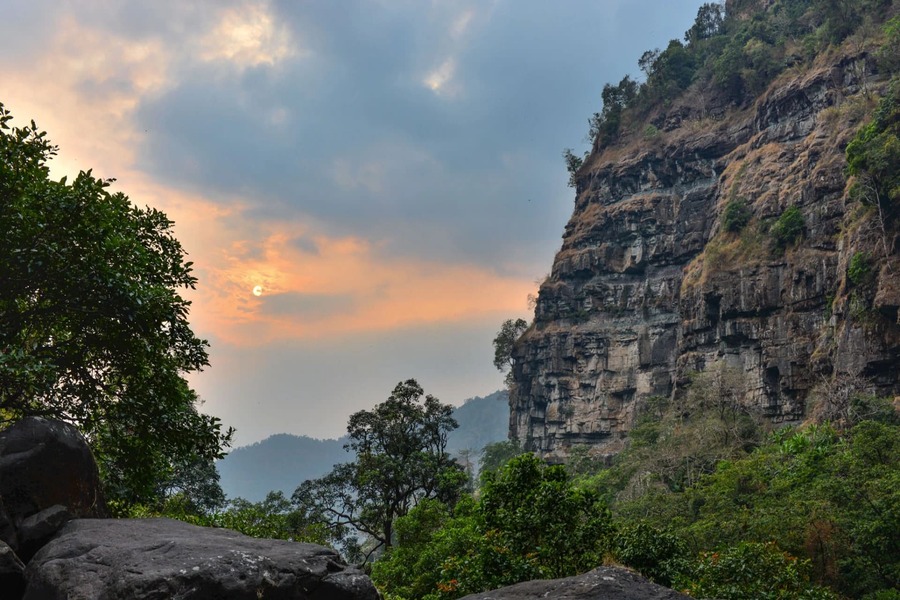
Limestone Karst and Trekking Trails
The park’s limestone karst landscape is a trekker’s dream, with trails weaving through dramatic cliffs, lush forests, and serene valleys. Popular routes offer breathtaking views of the Annamite Mountains, best explored during the dry season (November-March) when trails are dry and skies are clear.
Travel Tip: Opt for guided treks to learn about the park’s geology and spot wildlife like hornbills. Always stay on marked paths for safety.
Wildlife and Biodiversity Adventures
Hin Nam No’s biodiversity makes it a paradise for wildlife enthusiasts. Guided tours focus on spotting rare species like the Large-Antlered Muntjac or endemic cave creatures like blind fish. Night safaris may reveal nocturnal species, such as the Giant Huntsman Spider.
Travel Tip: Join early morning tours for the best wildlife sightings. Bring binoculars and eco-friendly insect repellent.
Cultural Immersion with Ethnic Communities
Engage with the Brou and Katang communities through homestays or cultural tours. Learn about traditional weaving, farming, and spiritual practices tied to the karst landscape. These experiences support local livelihoods and sustainable tourism.
Travel Tip: Respect local customs by dressing modestly and asking permission before photographing. Book through TrueIndochina.Tours for authentic cultural encounters.
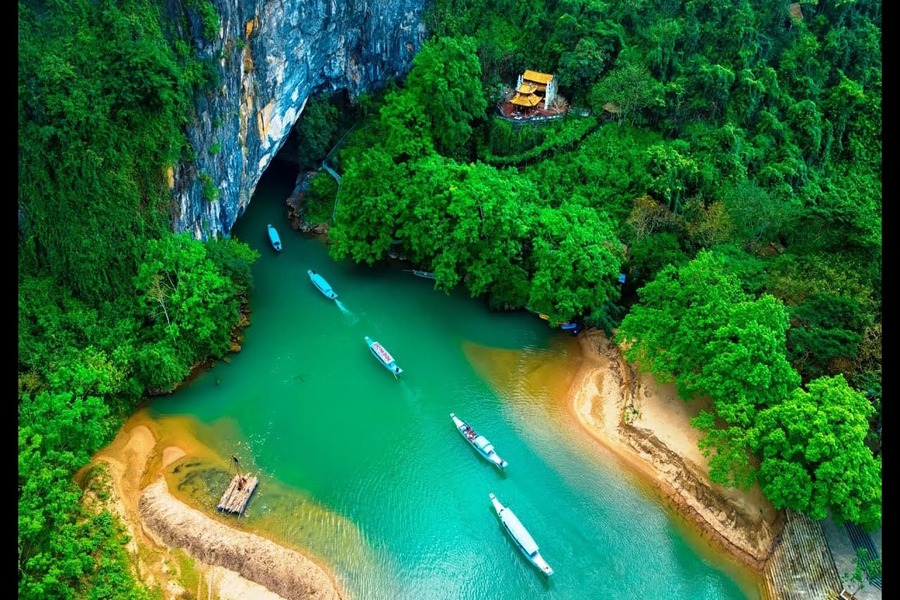
Why Visit Hin Nam No National Park in 2025?
Hin Nam No’s UNESCO designation in 2025 makes it a prime destination for eco-travelers and culture seekers. Here’s why you should visit:
- Global Prestige: As Laos’ 4th UNESCO World Heritage Site, Hin Nam No joins Luang Prabang (1995), Vat Phou (2001), and the Plain of Jars (2019), ensuring enhanced conservation and global recognition.
- Sustainable Tourism: The UNESCO status promotes eco-friendly tourism, benefiting local communities in Khammouane while preserving the park’s pristine environment.
- Cross-Border Exploration: Combine your visit with Phong Nha-Ke Bang in Vietnam for a unique transboundary adventure, showcasing Southeast Asia’s largest karst landscape.
- Authentic Experience: Hin Nam No remains less crowded than other UNESCO sites, offering an off-the-beaten-path journey for adventurous travelers.
Best Time to Visit Hin Nam No National Park – Laos’ 4th UNESCO World Heritage Site
The dry season (November-March) is the optimal time to visit Hin Nam No National Park, with mild temperatures (15-25°C/59-77°F) ideal for trekking, cave exploration, and wildlife spotting. Clear skies enhance views of the karst landscape, and trails are accessible. The rainy season (June-October) brings lush greenery but increases risks of muddy trails and flooding, particularly in August, the wettest month. Avoid March-April, when the burning season causes smoky haze, reducing air quality in northern Laos.
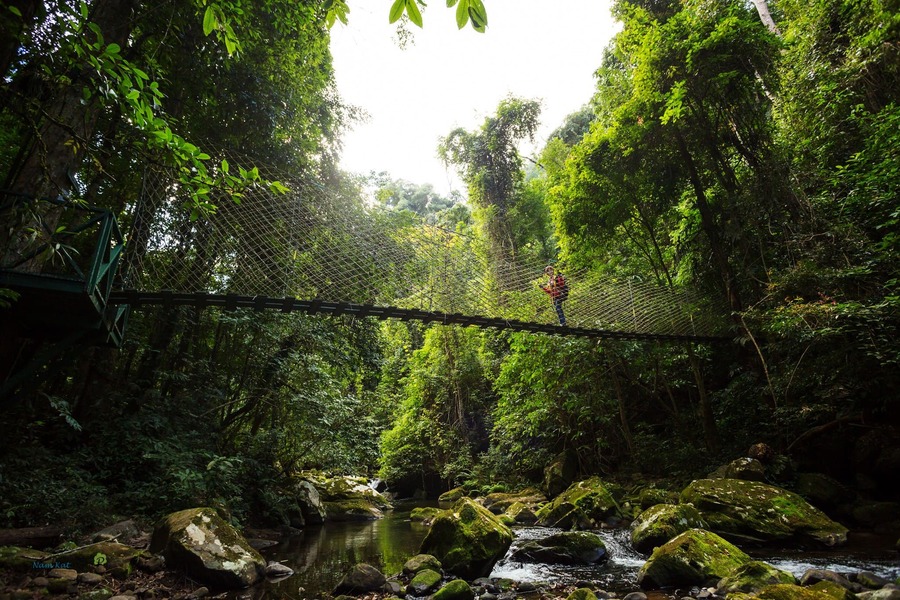
Travel Tip: Visit in November or February to avoid peak crowds in December-January. Book tours early through TrueIndochina.Tours for seamless planning.
How to Get to Hin Nam No National Park
Hin Nam No is accessible via Thakhek, the capital of Khammouane Province:
- Flight: Fly into Vientiane (Wattay International Airport) or Savannakhet Airport from Bangkok or Hanoi ($100-$300). From there, take a bus or private transfer to Thakhek ($5-$15, 3-5 hours).
- Bus: Direct buses from Vientiane or Pakse to Thakhek cost $5-$15 (6-8 hours). Book via 12Go Asia for reliability.
- Laos-China Railway: Travel from Vientiane to Thakhek ($10-$20, ~3 hours), followed by a taxi to the park’s entrance in Boualapha District (1-2 hours).
Travel Tip: Use a 4WD vehicle for rural roads, especially in the rainy season. Book transport-inclusive tours with TrueIndochina.Tours for convenience.
Accommodation Near Hin Nam No National Park
Accommodation options are modest but expanding due to the park’s UNESCO status:
- Budget ($5-15/night): Guesthouses in Thakhek, such as Southida Guesthouse, offer affordable stays with basic amenities.
- Mid-Range ($15-50/night): Hotels like Hotel Riveria Thakhek provide comfort with Wi-Fi and air conditioning.
- Homestays ($10-20/night): Stay with local families in Boualapha District for a cultural immersion.
- Eco-Lodges ($50-100/night): Emerging eco-lodges offer sustainable stays with karst views.
Travel Tip: Reserve accommodations through TrueIndochina.Tours for packages that include park access and guided tours.
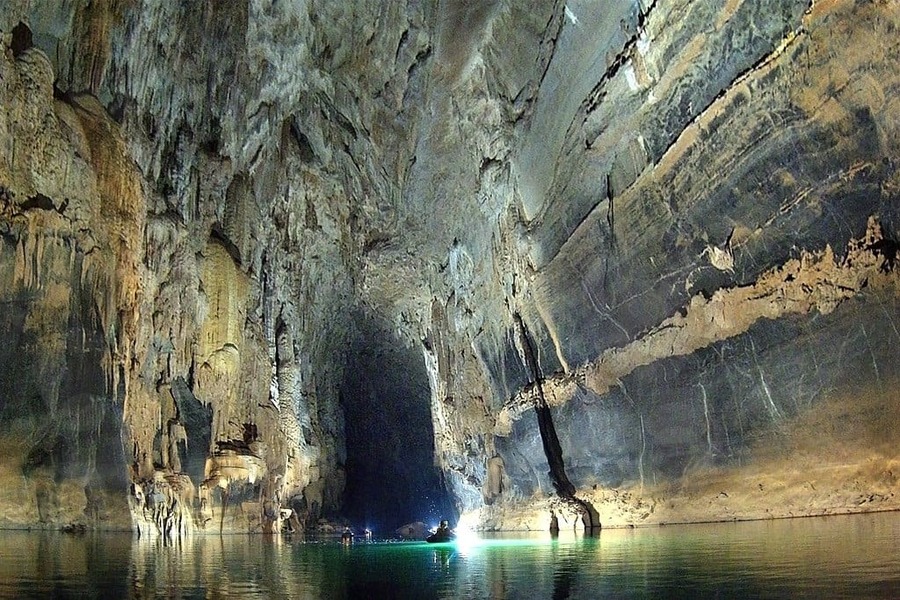
Activities and Tours in Hin Nam No National Park
Hin Nam No offers diverse activities for adventure and culture enthusiasts:
- Cave Exploration: Guided tours of Xe Bang Fai Cave ($20-$50) include boat rides through stunning subterranean passages.
- Trekking: Multi-day treks ($30-$100) explore karst peaks and forests. Day hikes suit beginners.
- Wildlife Tours: Spot rare species like the Southern White-Cheeked Gibbon ($20-$40). Night tours reveal cave-dwelling creatures.
- Cultural Tours: Engage with ethnic villages through weaving workshops or traditional meals ($15-$30).
- Photography Tours: Capture the park’s dramatic landscapes with guided trips ($50-$100).
Travel Tip: Book with TrueIndochina.Tours for tailored itineraries, including cross-border tours with Phong Nha-Ke Bang.
Conservation and Sustainable Tourism in Hin Nam No
Hin Nam No’s UNESCO status reinforces its role in global conservation, managed by Laos’ Ministry of Agriculture and Forestry (MAF) with support from GIZ and the IUCN Green List. Key efforts include:
- Biodiversity Protection: Anti-poaching patrols safeguard species like the Sunda Pangolin.
- Sustainable Tourism: Limited visitor numbers preserve the park’s ecosystems, with eco-friendly tours promoted.
- Community Empowerment: Local ethnic groups benefit from homestays and handicraft sales, supporting sustainable livelihoods.
Travel Tip: Choose eco-certified operators and follow park guidelines, such as avoiding littering and sticking to trails.
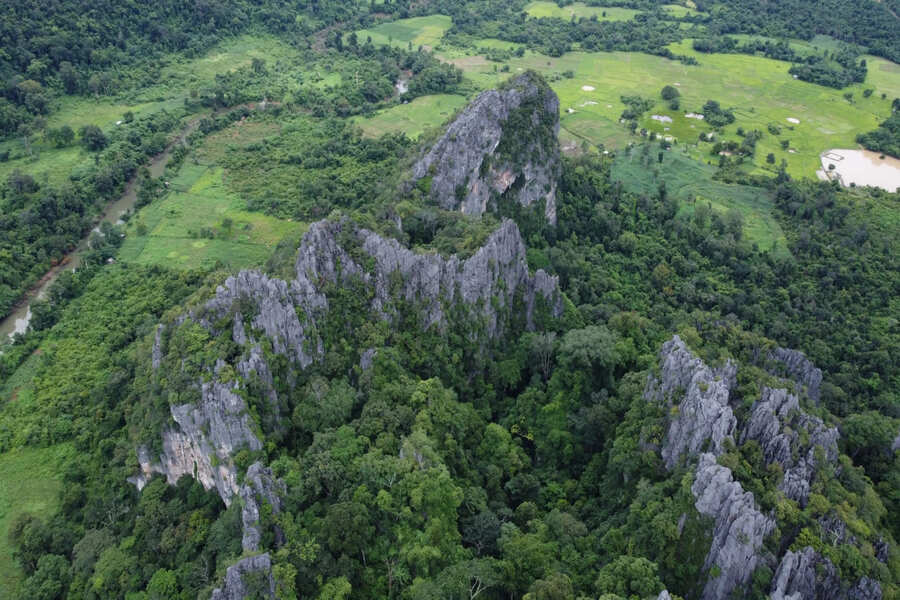
Cultural Significance of Hin Nam No National Park
The park’s ethnic communities enrich its UNESCO designation. The Brou and Katang practice sustainable agriculture and hold spiritual beliefs tied to the karst landscape. Visitors can engage through:
- Weaving Workshops: Learn traditional textile techniques ($10-$20).
- Homestays: Share meals and stories with local families ($10-$20).
- Festivals: Experience events like Boun Ok Phansa (October) with river lantern ceremonies.
Travel Tip: Use basic Lao phrases like “khop jai” (thank you) to connect with locals. Book cultural experiences via TrueIndochina.Tours.
Planning Your Visit to Hin Nam No National Park
Visa and Entry Requirements
Most nationalities need a visa for Laos ($35-$50 on arrival or e-visa). Ensure passports are valid for 6 months with 2 blank pages. Guided tours are required for cave access but not for general park entry.
Safety Tips
- Health: Vaccinate against Hepatitis A, Typhoid, and Japanese Encephalitis. Use DEET-based repellent for mosquitoes.
- Safety: The park is safe, but guided tours are essential to avoid UXO risks in rural areas.
- Weather: Pack lightweight clothing, sturdy boots, and rain gear for wet season visits.
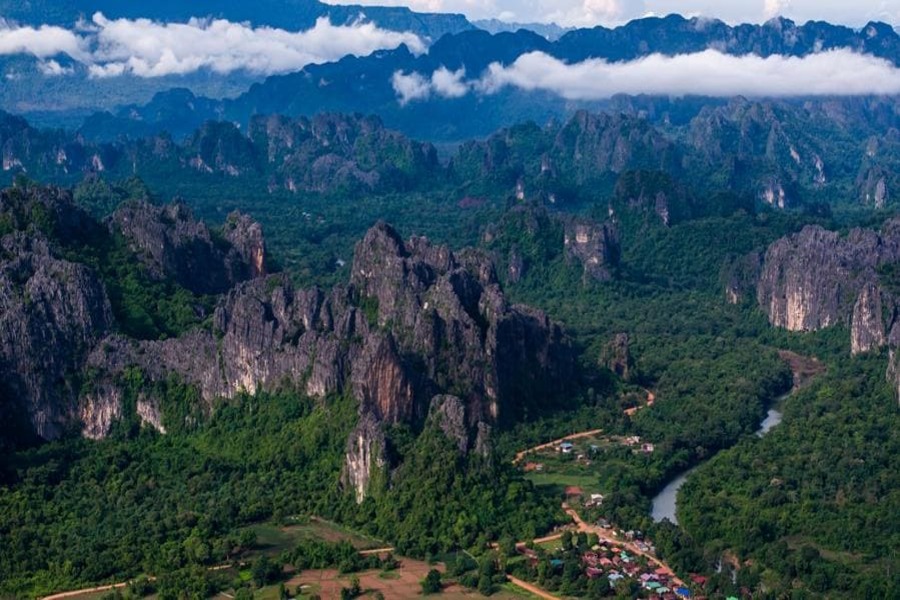
Budgeting for Your Trip
A 5-day mid-range trip for one person costs ~$500-$800:
- Transport: $100-$200 (flights to Vientiane, bus to Thakhek).
- Accommodation: $100-$200 (hotels or homestays).
- Tours: $100-$250 (cave, trekking, cultural tours).
- Food: $50-$100 (local eateries).
- Miscellaneous: $50-$100 (souvenirs, tips).
Travel Tip: Book a package with TrueIndochina.Tours for cost-effective, sustainable travel.
Exploring Laos’ Other UNESCO Sites in Laos
Combine Hin Nam No with Laos’ other UNESCO World Heritage Sites:
- Luang Prabang (1995): Discover historic temples and the alms-giving ceremony ($5-$15/day).
- Vat Phou, Champasak (2001): Explore ancient Khmer ruins ($3 entry).
- Plain of Jars, Xiengkhuang (2019): Unravel the mystery of megalithic jars ($2 entry).
Travel Tip: Create a 10-day itinerary with TrueIndochina.Tours to visit all four UNESCO sites.
Hin Nam No National Park’s recognition as Laos’ 4th UNESCO World Heritage Site in 2025 highlights its global significance as a natural and cultural treasure. From the Xe Bang Fai Cave to its vibrant biodiversity and ethnic communities, the park offers an unparalleled eco-adventure. Plan your visit with TrueIndochina.Tours for expert-guided tours, sustainable travel, and a seamless journey across Laos and Vietnam’s transboundary karst landscape. Ready to explore this UNESCO gem? Contact us or share your travel plans in the comments below!


0 Comment